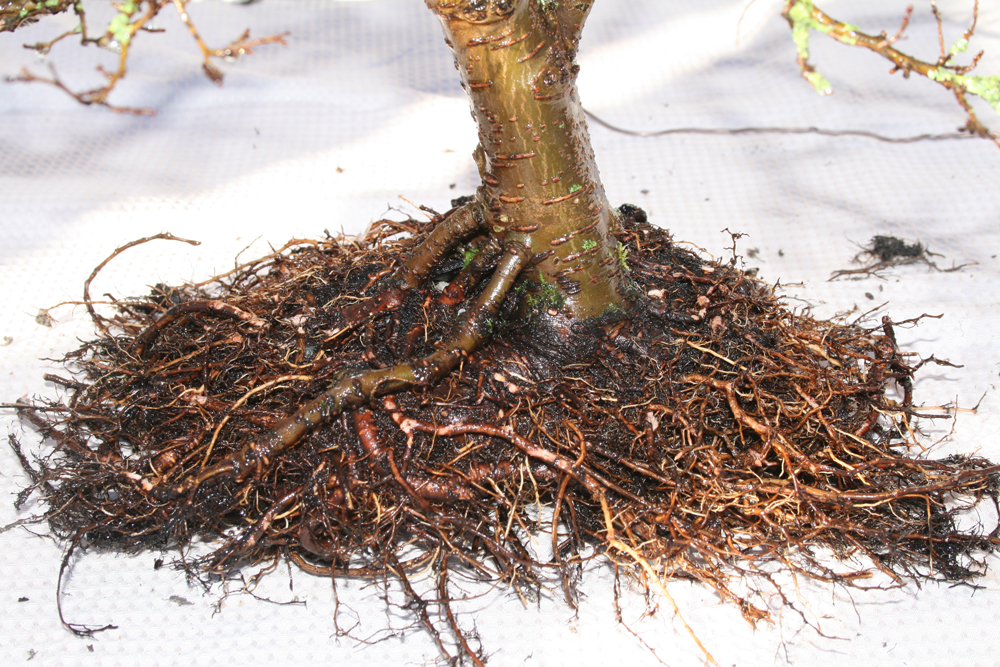Bonsai Root Pruning Guide: Keep Your Bonsai Tree Healthy and Thriving
Proper root pruning is a vital part of bonsai care. By regularly pruning a bonsai’s roots, you encourage a healthy root system, better nutrient absorption, and promote a balanced canopy-to-root ratio. In this detailed guide, you’ll learn when and how to prune bonsai roots to maintain your tree’s miniature size and long-term vitality.
What Is Bonsai Root Pruning?
Bonsai root pruning involves trimming the roots of your bonsai tree to control its size and health. Unlike standard garden plants, bonsai trees live in small containers, making root management essential to avoid becoming rootbound or nutrient-deficient.
Why Root Pruning Is Important
- Prevents rootbound conditions
- Encourages fine feeder root growth
- Improves overall tree health and shape
- Supports long-term growth in small pots
- Promotes balanced foliage-to-root ratio
When to Prune Bonsai Roots
- Early Spring (before bud break) is ideal for most species.
- After heavy pruning of branches, root pruning is often done to maintain balance.
- During repotting, which typically occurs every 1–3 years depending on species and age.
How to Prune Bonsai Roots: Step-by-Step
- Remove the Bonsai from Its Pot
- Gently loosen the soil around the edges using a root rake or stick.
- Tilt the pot carefully and ease the tree out by supporting the trunk base.
- Avoid pulling forcefully, as this can damage roots or branches.
- Clean the Root Ball
- Use a root hook to untangle matted roots and remove compacted soil.
- For stubborn areas, lightly rinse the root ball with water to expose roots.
- Removing soil reveals the health and spread of the root system, which helps guide trimming.
- Trim the Roots
- Use bonsai-specific root shears for clean, precise cuts.
- Trim no more than 1/3 of the root mass in one session, focusing on overly long, thick, or circling roots.
- Always retain as many healthy feeder roots (thin, white roots) as possible—they absorb most water and nutrients.
- Inspect for Pests or Rot
- Look for black, mushy, or foul-smelling roots—these are signs of rot and must be removed.
- Check for signs of pests like root aphids or fungal infections.
- Prune back to firm, pale-colored roots only.
- Re-pot in Fresh Soil
- Select a well-draining bonsai soil mix (typically akadama, pumice, and lava rock).
- Layer soil in the pot, gently position the tree, and add more soil around roots, working it in with a chopstick.
- Secure the tree with wire if needed to stabilize during recovery.
- Water thoroughly to help the soil settle and eliminate air pockets.
- Use bonsai-specific soil for good drainage.
- Secure the tree and water thoroughly.
Aftercare Tips
- Keep the tree in partial shade for a few weeks.
- Avoid fertilizing immediately after root pruning.
- Water regularly but don’t overwater.
Recommended Tools for Root Pruning
Common Mistakes to Avoid
- Pruning too much at once
- Using dull or dirty tools
- Repotting in poor-quality soil
- Skipping aftercare steps
Outbound Resource
Read more on Bonsai Techniques.
Related Article
Want a complete care routine? Check out our Bonsai Tree Care Guide for watering, pruning, and styling advice.
Final Thoughts
Bonsai root pruning might seem intimidating at first, but it’s essential for keeping your miniature tree healthy, compact, and beautiful. With the right tools and timing, you’ll be able to support vigorous growth while maintaining that signature bonsai silhouette.
Consistent care is the key to long-term bonsai success. Root pruning, when done properly, not only rejuvenates your plant but also encourages a more refined root structure that supports smaller leaves and finer branching. This directly enhances the overall aesthetic and health of your tree.
Don’t forget that different species may have slightly different needs—so always research your specific bonsai tree before pruning. Over time, you’ll become more confident, and pruning will become a regular, rewarding part of your bonsai routine.
Take your time, follow the steps above, and your bonsai will thank you with strong roots and a thriving canopy. at first, but it’s essential for keeping your miniature tree healthy, compact, and beautiful. With the right tools and timing, you’ll be able to support vigorous growth while maintaining that signature bonsai silhouette.
Take your time, follow the steps above, and your bonsai will thank you with strong roots and a thriving canopy.

